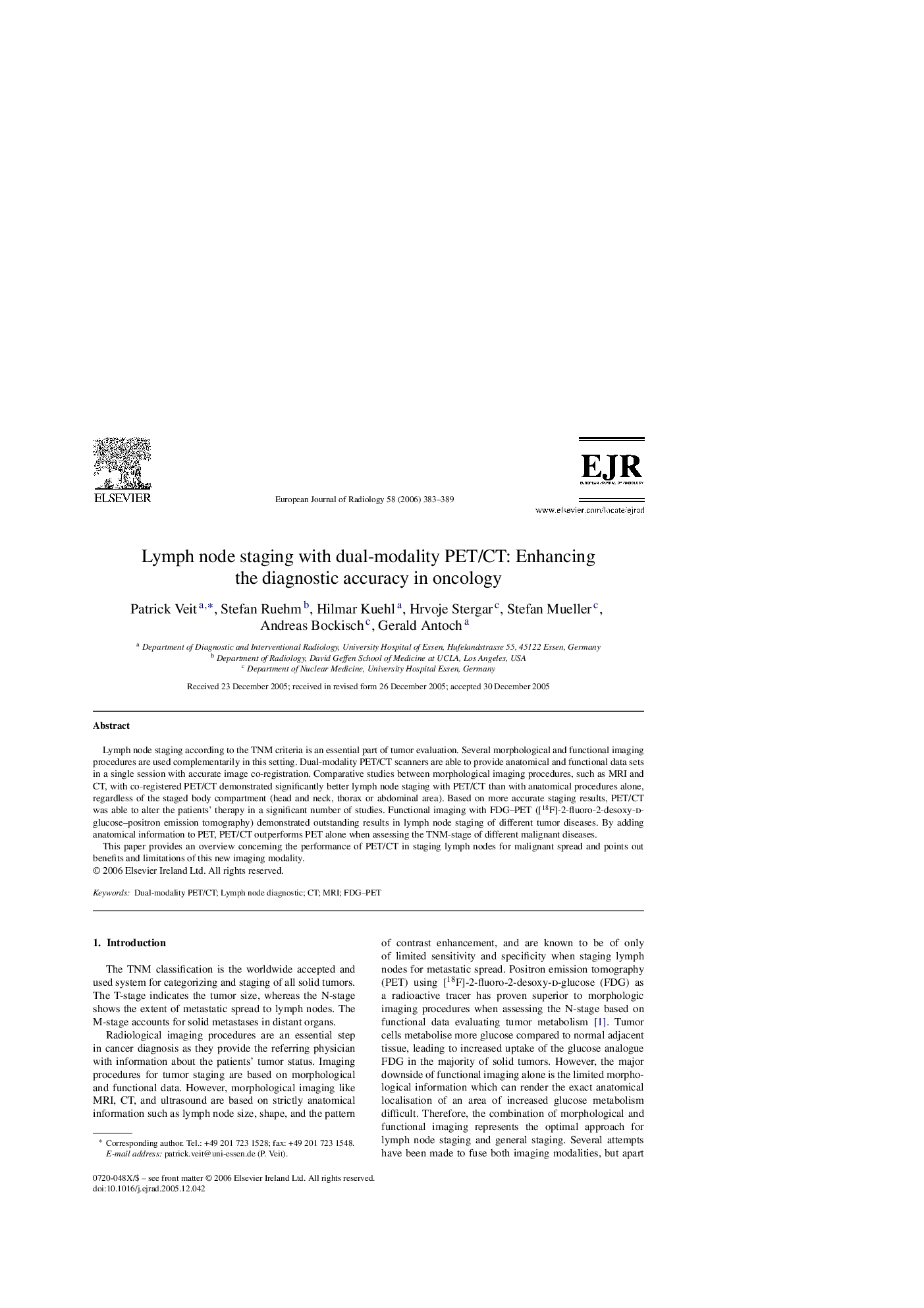| Article ID | Journal | Published Year | Pages | File Type |
|---|---|---|---|---|
| 4228790 | European Journal of Radiology | 2006 | 7 Pages |
Lymph node staging according to the TNM criteria is an essential part of tumor evaluation. Several morphological and functional imaging procedures are used complementarily in this setting. Dual-modality PET/CT scanners are able to provide anatomical and functional data sets in a single session with accurate image co-registration. Comparative studies between morphological imaging procedures, such as MRI and CT, with co-registered PET/CT demonstrated significantly better lymph node staging with PET/CT than with anatomical procedures alone, regardless of the staged body compartment (head and neck, thorax or abdominal area). Based on more accurate staging results, PET/CT was able to alter the patients’ therapy in a significant number of studies. Functional imaging with FDG–PET ([18F]-2-fluoro-2-desoxy-d-glucose–positron emission tomography) demonstrated outstanding results in lymph node staging of different tumor diseases. By adding anatomical information to PET, PET/CT outperforms PET alone when assessing the TNM-stage of different malignant diseases.This paper provides an overview concerning the performance of PET/CT in staging lymph nodes for malignant spread and points out benefits and limitations of this new imaging modality.
